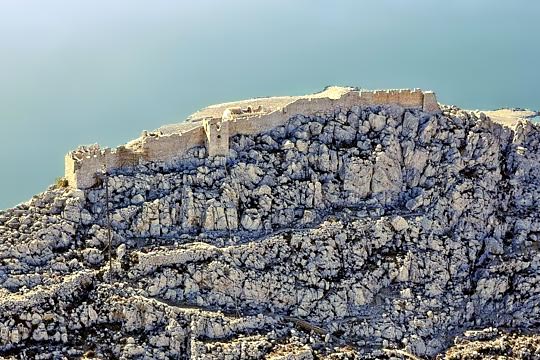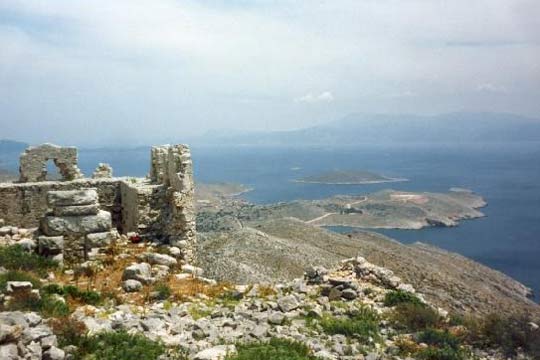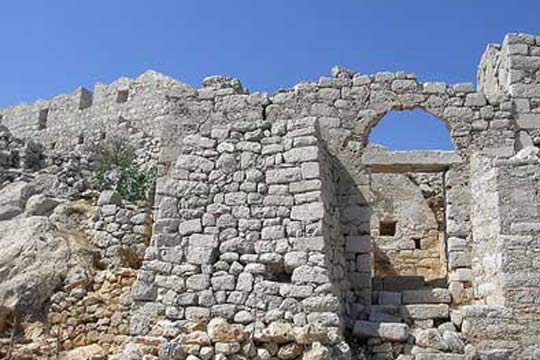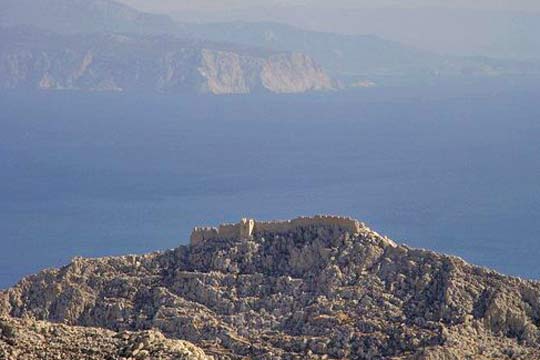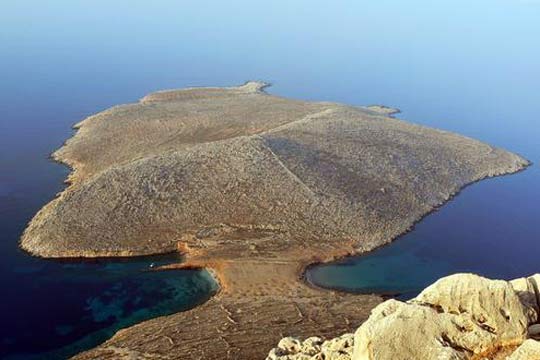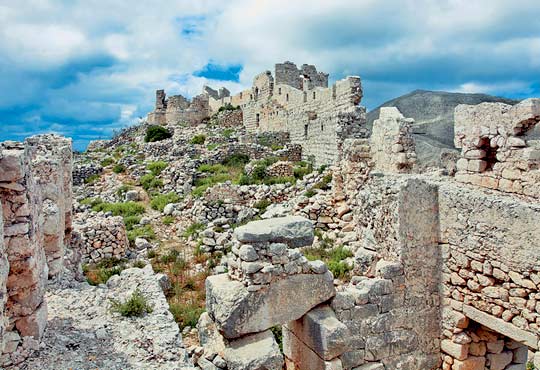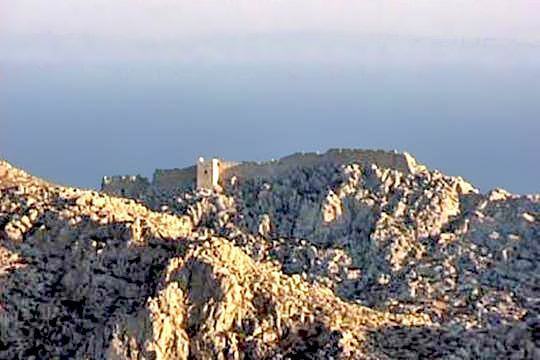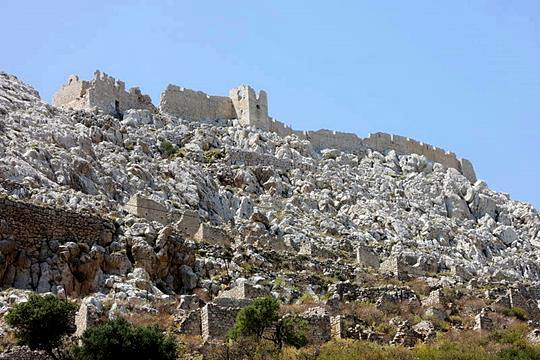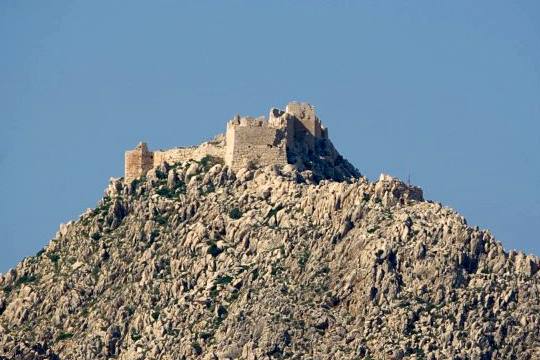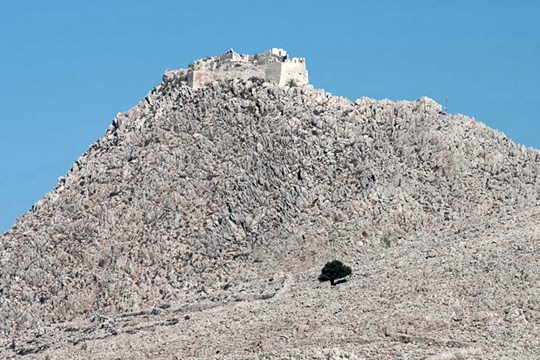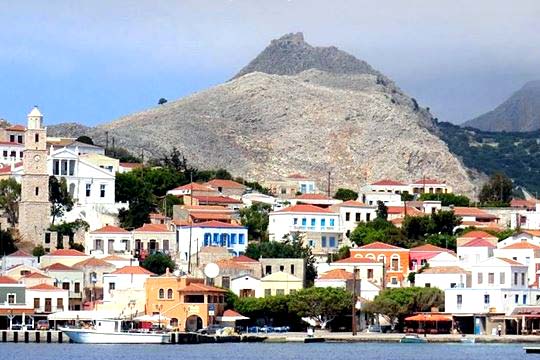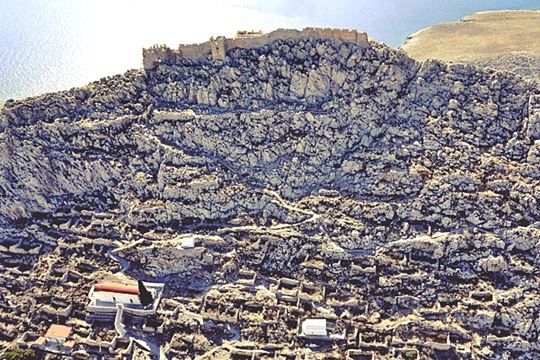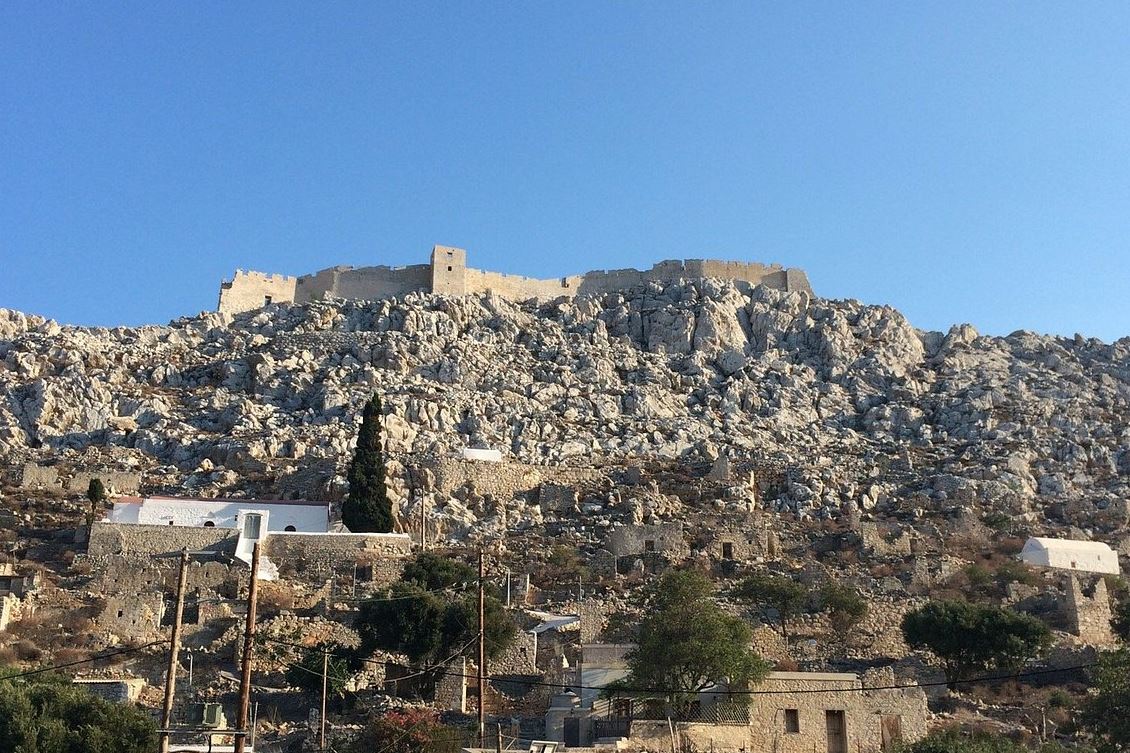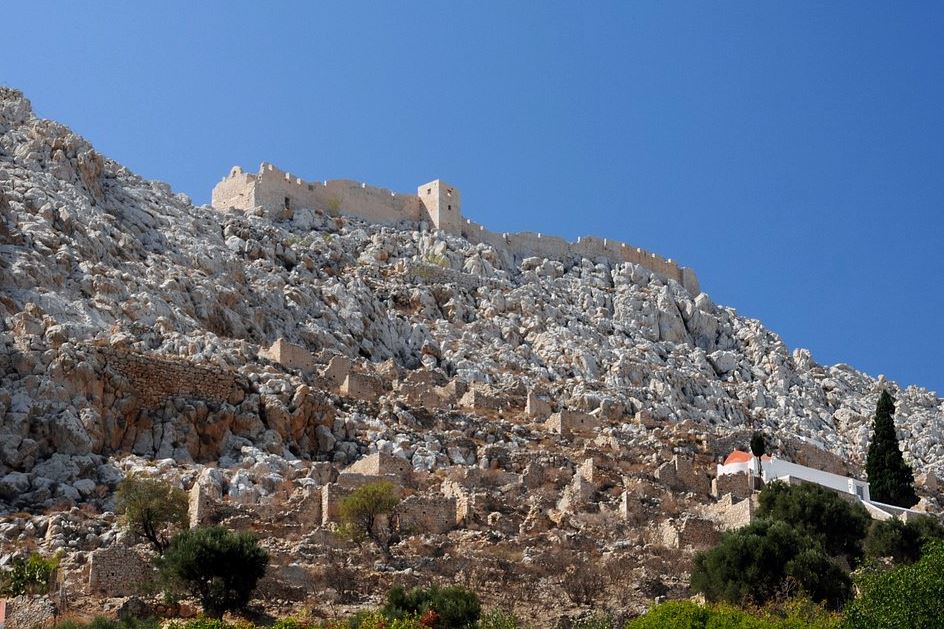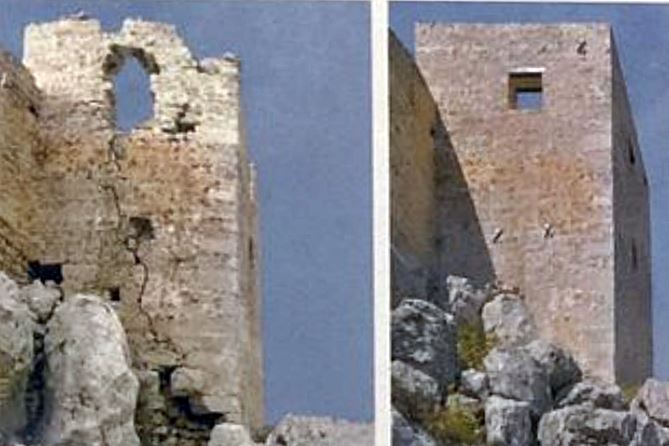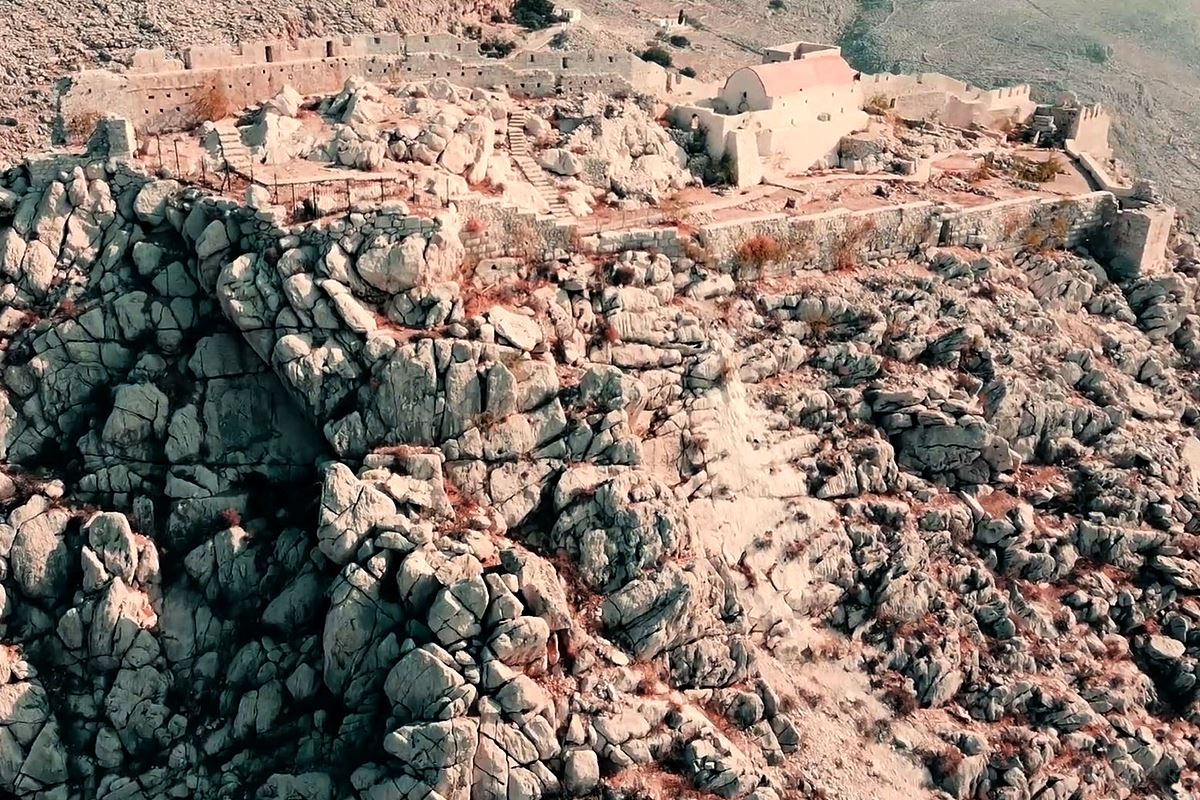Chorio, Chalki, Dodecanese,South Aegean
Castle of Halki
| Location: |
| Halki island, Dodecanese |
| Region > Prefecture: | 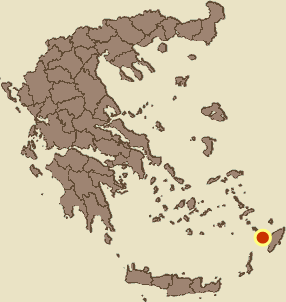 |
| South Aegean Dodecanese | |
| Municipality > Town: | |
| City of Chalki • Chorio | |
| Altitude: | |
| Elevation ≈ 160 m |
| Time of Construction | Origin | |
| 15th century | IOANNITE |
|
| Castle Type | Condition | |
| Castle |
Rather Poor
|
Halki (Greek: Χάλκη; alternatively Chalce or Chalki) is a Greek island and municipality in the Dodecanese archipelago in the Aegean Sea, some 6 km west of Rhodes. With the area of 28 km2, it is the smallest inhabited island of Dodecanese.
The old village along with the castle is the most important archaeological site on the island. The now ruined medieval village is located on St Nicholas Hill in the shadow of the castle. It used to be the main village on the island and has been lived in permanently since the era of the Knights. It was inhabited until the mid 19th century providing shelter from pirates.
History
The Castle is located on the hill of St. Nicholas over the old village of Halki. It was built by the Knights of St. John in the 15th century over the ancient Hellenistic citadel. From there they were able to control the sea routes, the harbor and the Trachean peninsula. Inside the castle are the ruins of the medieval church of St. Nicholas. At the gate the emblem of the Grand Master of the knights Pierre d’Aubusson (1476-1503) is engraved
From the decrees of the Grand Masters Orsini (1474) and D'Aubusson (1479), concerning measures to protect the population from enemy attacks, we infer that the castle was not considered a safe and the instructions were for the inhabitants to seek shelter in the castle of Rhodes. The main reason must have been that the castle was small and could not accommodate many people. Furthermore, the number of experienced warriors available in Chalkis who could defend the castle must have been limited.
As a consequence of this defense strategy, in the years 1475 and 1480 the castle was evacuated, while in 1493 it was finally abandoned and the inhabitants of Chalki sought refuge in Rhodes. In 1522 it was occupied by the Turks.
During the Turkish occupation, the castle was not modernized and was permanently abandoned. It was only used as an observation post. It is known that in 1658 the vigilators of the castle notified the Ottoman garrison of Rhodes about an imminent attack by the Venetian fleet under Francesco Morosini.
Structure, Fortification & Buildings
This is a small castle that occupies an area of approximately 2,000 sq.m. within a perimeter of 260 meters. The shape is elongated following the ridge of the rock in the east-west axis.
The walls of the south side have collapsed, but it seems that they were never of great height, because the natural formation of the rock is already a fortress. Better preserved is the north side shown in photos 1, 13-15. At the eastern end is the main entrance.
From the ancient acropolis that pre-existed on the site, the gate stones and the lintel of the main entrance, the secondary gate on the south side and some other scattered parts that have been incorporated as spolia in the later constructions are preserved.
In 2014, extensive maintenance and restoration works began in the castle, among other things, the large square northern tower, which is the most characteristic element of the castle, was restored (photo 16).
The church of Agios Nikolaos with remains of frescoes from the 15th and 17th centuries is preserved in its interior.
| First entry in Kastrologos: | October 2012 | Last update of info and text: | January 2024 | Last addition of photo/video: | January 2024 |
|
|
| Access |
|---|
| Approach to the monument: |
| During summer, there is a mini-bus service to the sites of that part of the island. Or you can walk there from Emporeio (45min) |
| Entrance: |
| Free entrance |



